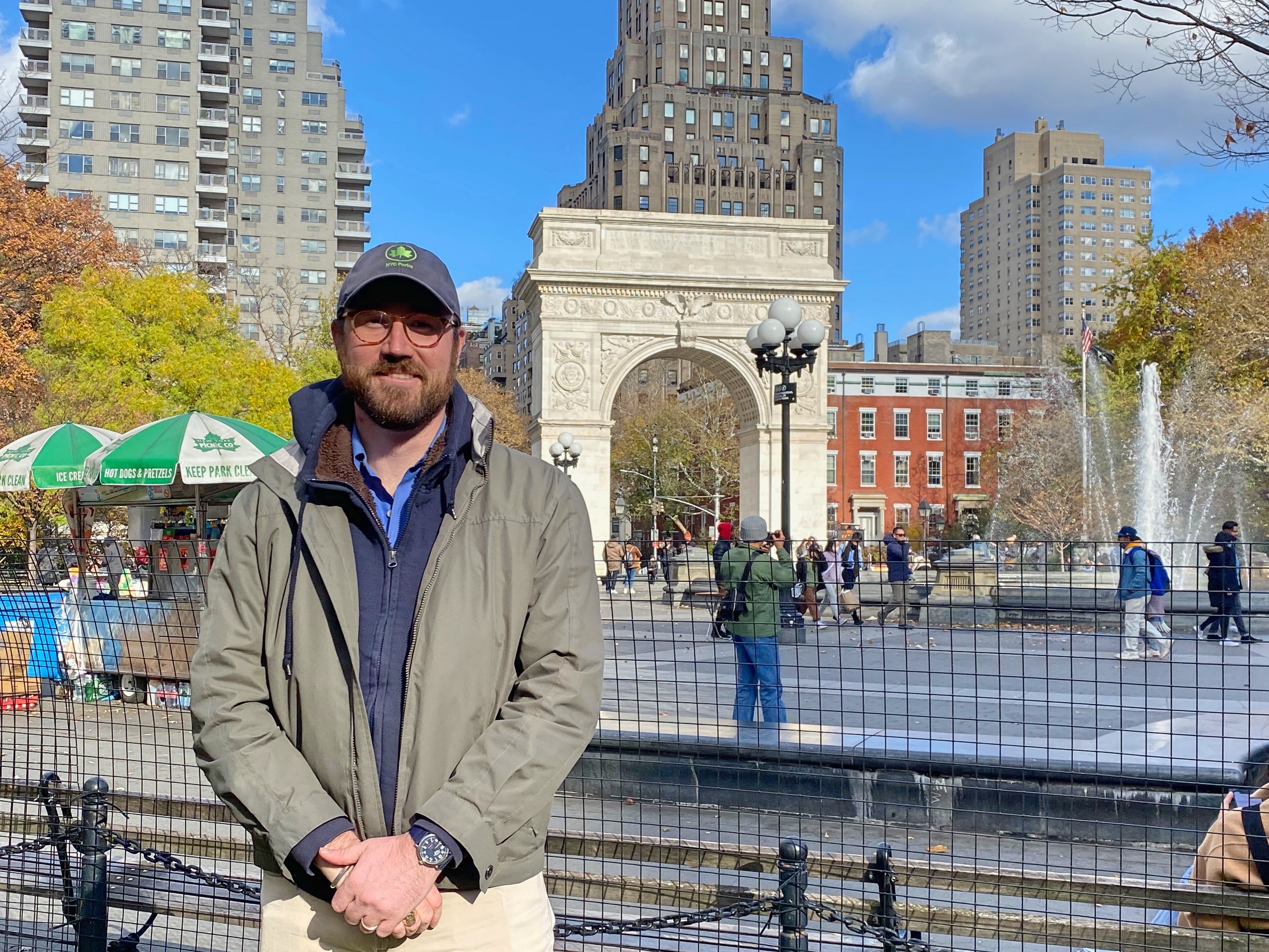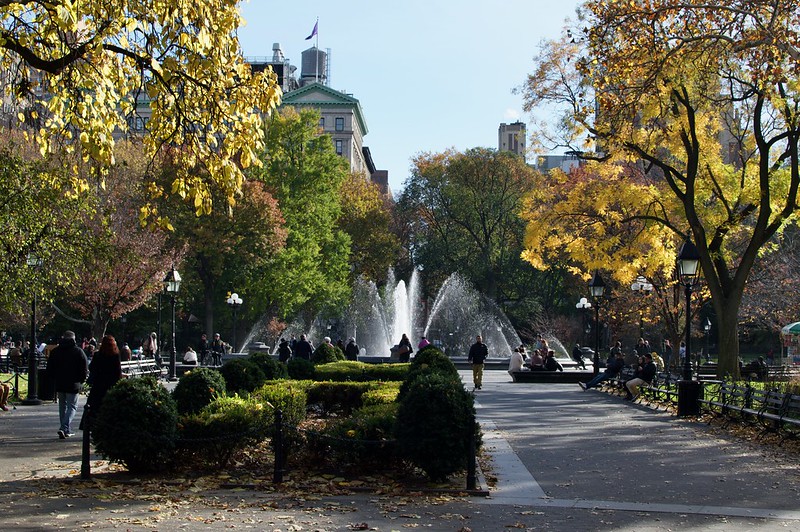December Update from the WSP Deputy Administrator

As the season transitions from the busier warm months to a quieter period when the temperature drops, it becomes imperative for the well being of the park to winterize. Winterization is the term NYC Parks uses to encompass physical changes that are made as well as changes to the Park’s day-to-day operations as the seasons change from summer to winter.
The landscapes team is usually the first to begin the process. They work closely with our outside irrigation vendor to clear the lines of the park’s entire system so there’s no water left in the jets or hosing. If left to freeze, the resulting ice can rupture the lines. In order to clear them, a compressor truck comes in to blow air through every pipe and hose throughout the park. If you’ve ever been walking around in mid-fall and randomly see bursts of sprinklers going off it’s actually the irrigation system being cleared.
The landscapes team is also responsible for gathering and mulching the many leaves of WSP as they fall. Between the landscapes team and the park’s volunteers, the lawns are regularly cleared during this period of leaf drop as the grass will die over the winter if it’s left buried. Those same leaves act as a protective layer for soil in the garden beds along with providing other ecological benefits, especially when ground up into a finer consistency called mulch or leaf mulch. Even before they are mulched, decomposing leaves release nutrients that benefit the soil as they deteriorate over the winter months. The smaller, finer mulched leaves offer those same nutrients but decompose at a faster rate while also providing a softer blanket than whole leaves, which is gentler on delicate and smaller plant growth.
The mulching process starts when the team creates a leaf bin by fencing off a small section within one of the park’s lawns. They’re careful to choose a lawn that will be closed the following year for rest and reseeding (this year’s bin is on one of the SE lawns) since the leaf bin adds a lot of additional stress. Then they start piling up the leaves that are gathered up all around the park and cut that pile up into mulch. Thanks to WSPC, this year we have an electric mulcher which helps streamline the process. Between it and running a lawn mower over the leaves, they’re quickly broken down into mulch and then redistributed across the beds. Not only is this home-grown mulch great for the beds, but it also saves us staff time. Leaves have to be bagged and brought to leaf sites for appropriate disposal at parks that can’t mulch, or have too much leaf cover to rely solely on mulching.
Another part of landscapes winterization includes planting bulbs, which will spend the winter in the ground before blooming in early Spring. WSP’s landscapes team planted 5,000 bulbs donated through New Yorkers for Parks’ Daffodil Project. The daffodil bulbs joined 3,500 snowdrop bulbs, 3,922 Spanish bluebell bulbs, 5,303 tulip flair bulbs, and 5,439 Tulip Keizerskroon bulbs purchased earlier this season by the Conservancy. They’ll be beautiful additions when they bloom.
It isn’t just the landscapes team that works on winterizing tasks. On the maintenance and operations front we change equipment from the summer roster of mowers, seed spreaders, and aerators to colder weather tools such as salt spreaders, snow blowers, and plows. We test it, make necessary repairs, and stage it so everything is ready for the first snow when it comes.
On the water features front, the NYC Parks plumbers make a trip out to turn off WSP’s various systems at the end of each season. These features include the fountains in the dog run, drinking fountains, the sprinklers in the playgrounds, and our world famous center fountain. The center fountain ran longer than usual this season thanks to the warm weather, which eliminated the concern of a cold front coming in to freeze the pipes. Having the fountain on so much longer made a beautiful scene with the fall leaves. The water features go through the same winterizing process as the irrigation system. The lines, pipes, and tanks are drained so there’s no remaining water to freeze and expand, causing breakages. Fun fact: those two pipes you see in the lawn directly across from the Park House lead down to the water tanks. In addition to the water, the lights in the middle of the fountain also get turned off for the winter. They’re made to be submerged in water and when they’re running outside of water they burn out. Also, this year we’re adding protective metal plates to the outer ring of fountain jets to block out snow, water, and trash.

Finally, the hours at the comfort station shorten as the daylight hours shorten. This year’s night crew will be in the park through the end of December, so the comfort stations will remain open until 6:30pm.
I hope you enjoy a lovely holiday season with your friends and loved ones. Be sure to spend some of it in Washington Square Park, it’s beautiful this time of year.
